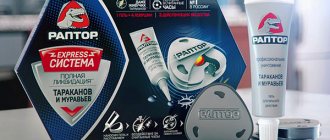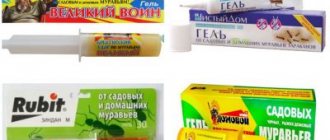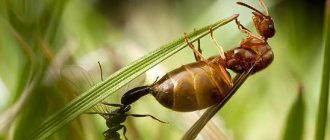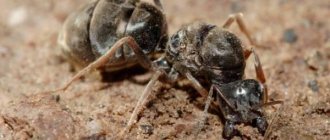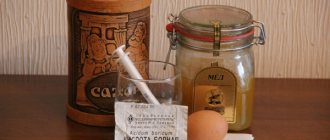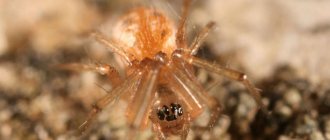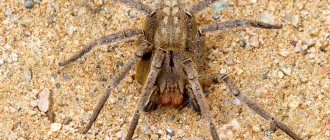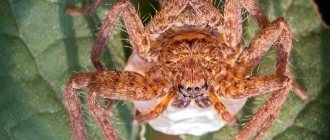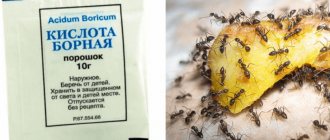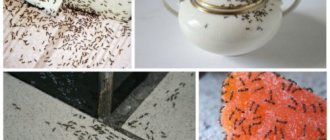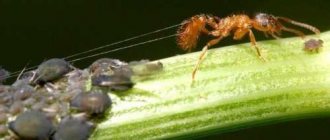The pristine tropical nature of the Amazon was, is and will be a subject of inexhaustible interest not only for botanists and zoologists, but also for tourists who prefer active recreation with elements of extreme sports. Traveling through these virgin forests, you can fully satisfy your curiosity and passion for studying the endless secrets of living nature.
The fauna of the Amazon is characterized by wide diversity (this is greatly favored by the humid tropical climate): numerous representatives of exotic species of animals and birds live here. However, few people know that in percentage terms, the leading place in the number of representatives of the species inhabiting this area is occupied by insects, most of which are ants. Their laws of existence and mechanisms of interaction with the environment are of interest to researchers and adventurers traveling in the Amazon.
To list and give a detailed description of all representatives of tropical ants requires a lot of time and effort, so below is a brief summary of the main characteristics of the most common types of ants that a tourist who has decided to fully enjoy the beauty and grandeur of the nature of the Amazon will certainly encounter on the way.
Bullet ant (paraponera clavata)
It differs from its relatives in body size (can reach 2.5 centimeters) and the pain of the bite , which is how it earned its name. However, length is not the only characteristic that distinguishes it from other ants. In addition to everything, it has a fairly massive structure; on the front of its body there is a pair of long horns with blunt ends. Also, yellow hairs grow on the forelimbs, and in the eye area there are peculiar niches to which antennae are attached. Their habitat is the base of trees, so these insects mainly come into the tourist’s field of view when they move in endless streams along the tree trunk in search of food.
Lifestyle
Nomadic ant syndrome manifests itself in the behavior and reproductive characteristics of insects. Its signs:
- collective foraging;
- construction of temporary nest-bivouacs;
- regular change of phases of settlement and migration;
- subordination of the reproductive cycle to the colony's movement schedule.
A family numbering several million requires enormous amounts of food.
It is impossible to get it in one place, so insects constantly migrate. The movement of a column of insects is similar to a running stream. Its width is 30-100 cm, length up to 45 m. Nomads on different continents differ in their speed of movement. African ants Dorylinae - 20 m/h, American Ecitoninae - 100-150 m/h. With the onset of dusk, the construction of the bivouac begins. A temporary nest in the shape of a ball from the bodies of working individuals is built in a secluded place. The queen and offspring are placed inside. The bivouac has several entrances. The diameter of the bivouac is about 1 meter; it requires 500-700 thousand ants to build. African Siafu ants dig nests in soft soil. Blind mole rats quickly prepare a shelter for a huge family of up to 20 million individuals. Their distinguishing feature is the absence of a sting. It is replaced by powerful mandibles; painful bites cause discomfort even to elephants. The jaws easily cut the coverings of insects and animals and tear off pieces of flesh from them.
Nomadic ants at any age feed exclusively on meat. For small larvae, hunters hunt for spiders, caterpillars, beetles, locusts, and scorpions. Birds that make nests on the ground and small vertebrates (lizards, snakes, rodents) become victims of predators. The colony cleans the found corpses of large animals, leaving behind only bones.
Ponerines (odontomachus)
The maximum length of these ants is 1.5 cm. Their main striking species feature is a massive hammer-shaped jaw , which is a formidable trap for the ponerine’s hunting objects. Despite their leisurely plasticity, their mandibles (upper jaws) slam shut with incredible speed, leaving no chance for prey.
PACYHONDYLA VILLOSA
Belongs to the ponerine subfamily. This tropical ant species can be confused with a bullet ant. PACYHONDYLA VILLOSA are not so large, however, the effect of their bite unites these ants with their “relatives”. PACYHONDYLA VILLOSA chooses dry tree trunks and areas with moist soil as its habitat. Their body is colored red and black, and is covered with a thick layer of hairs that have a golden hue.
PACYHONDYLA APICALIS
A distinctive feature of representatives of this species is hunting alone. Their average length is 1-1.2 cm. Their body is dark gray in color, and their antennae are bright yellow. This unusual color combination makes the PACYHONDYLA APICALIS ants look like wasps, and their peculiar “hopping” gait only adds to the similarity.
GIGANTIOPS DESTRUCTOR
The external resemblance of this ant to the representative of the tropical species described above is striking: size, color, movement patterns. They are distinguished from each other by the length of their limbs (in GIGANTIOPS DESTRUCTOR they are larger) and the shape of their eyes (large, located on the sides of the head). This is one of the most peaceful ants - it is absolutely incapable of stinging.
Description
Several related groups of true ants share a similar lifestyle called the nomadic ant syndrome. Their characteristic feature is regular migrations. Numerous colonies of insects, reaching several million, move within 1-2 weeks. They carry eggs, larvae, and the queen with them. Nomadic individuals do not build anthills; by interlocking bodies, they build a nest for numerous family members and the queen.
Adult
The body of an adult ant consists of three sections: head, chest (mesosoma) and abdomen. The stalk connecting the thoracic segments and the abdomen is called petiole. The chitinous exoskeleton protects and supports the insect's body. On the ant's head there are antennae consisting of 8-10 segments. These are sensory organs that detect vibrations and chemical odors.
Interesting fact. Most wandering ants do not have visual organs or they are greatly reduced. Blind insects navigate in space using their antennae. They communicate with each other by releasing pheromones.
The upper jaws of mandible ants vary in size, but are always well developed. In working individuals, they are designed to carry eggs and larvae and food. For soldiers, this is a powerful weapon. Strong mandibles help tear apart enemies. Insects have 3 pairs of legs; their paws have claws that help them move along a vertical surface. The abdomen of some species ends in a sting.
Interesting fact. Soldier ants of the genus Dorylus do not open their closed jaws even after death.
Communication system
There are 75 glands in the ant's body; they secrete various substances, including pheromones and repellents. Nomadic species have dozens of special signal odors produced in various situations. With the help of pheromones, scouts indicate the direction of movement of the entire column and report the location of the prey.
Ant hierarchy
The nomad ant family consists of hundreds of thousands or millions of individuals. They all obey a strict hierarchy and act as a single harmonious organism. The basis of a large colony is made up of worker ants. These are infertile females. Specialized groups are formed from them: workers, foragers, scouts, soldiers. Males are several times larger than representatives of the working caste. The main figure of the family is the queen. She is the only female involved in giving birth to new members of the colony. The queen's lifespan is 15-20 years.
A significant part of the family is brood - eggs, larvae, pupae. The workers take care of him. In the family, responsibilities are clearly divided, each insect is busy with its own work. A highly organized colony is capable of building bridges and nests from the bodies of ants, resisting enemies, and hunting.
Campomotus (wood borer)
Representatives of this species densely inhabit the rainforests of the Amazon.
The length of these ants can vary from 3 to 15 mm. Their food is plant sap, or an insect that also likes to feast on it. They earned their second name due to their ability to inhabit the thickness of tree trunks. Campomotus ants have a rather interesting body structure - a thin waist separates the thoracic part from the rounded abdomen. Their color comes in two types: those at night are yellow, and those that are daytime are dark brown. Golden Campomotus (Camponotus sericeiventris)
The insect has a very bright appearance: its black body is covered with a layer of shiny hairs, which sparkle with golden or silver tints in the sun. He has a rather interesting gait - he moves his limbs while pressing his abdomen to the chest part of his body.
Carpenter ant (Camponotus atriceps)
These are brown ants with unusually long limbs. Among ants that are active at night, this species is the most common. Their body is densely covered with a layer of hard hairs.
Dacetone Armigerum
Their habitat is tree trunks, where, settling, ants of this species form thousands of families. Their body has a light amber hue. The massive structure of the hammer-shaped jaw and three spines located on their body indicate active predatory behavior.
Features of reproduction
The reproductive function of the colony is assigned to the queen uterus. Tropical nomad ants have one queen, while other species may have several. The large winged female mates with the male during her first flight. Until the end of her life, she uses up the stored sperm. The adult fertilized queen sheds her wings. She is always protected by working ants. During movement, the cylindrical elongated abdomen of the female is slender. As hundreds of thousands of eggs mature, it swells. By the beginning of the stationary phase, the larvae turn into cocoons and do not require nutrition. All the meat obtained by the hunters is given to the queen.
Ants are hymenopteran insects with complete metamorphosis. This means that their life begins with the egg phase, then the larva emerges. Ants turn into adults after pupation. The formation of eggs begins during the period of sedentary life. The fertility of a female is 200-300 thousand pieces. The embryonic period lasts up to three weeks. By the time of the new migration, larvae emerge from the eggs.
This process is synchronized by the development of pupae; adults emerge from the cocoons of the previous clutch. To feed the larvae, the colony sets off. By the time they pupate, the column finds a place to stay.
Once a year, the queen makes a special clutch from which reproductive females and males emerge. As they age, they leave the family and form their own colonies.
Large-headed ants (Pheidole)
Their main difference from other species lies in the name - the gigantic size of the head in comparison with the small body.
The habitat of big-headed ants is the forest floor. Representatives of Pheidole are among the most numerous inhabitants of the Amazon rainforest. Leafcutter ant (Acromyrmex and Atta)
Red-colored insects with long limbs usually catch the eye of travelers carrying leaf particles that serve as food for the fungi that leaf cutters feed on.
Nomadic ant (Eciton burchellii)
Their body size reaches 1 cm in length. These insects have a peculiar structure of the upper jaws - in the form of forceps. Nomads regularly carry out raids, their victims include:
- arthropods
- small vertebrates
Despite the fact that numerous stories from impressionable tourists that Eciton burchellii can “gnaw” a person, to put it mildly, are at odds with reality, it is still better not to step on places where these insects accumulate, so as not to experience the very painful effect of their bite. .
Classification
There are three subfamilies of tropical nomad ants in the world. The main classification occurs according to habitat:
- Aenictus are small to medium-sized insects common in Asia, Australia and Africa. Working individuals are yellow-brown in color, their body length does not exceed 3.5 mm. Males and females of the genus are much larger, reaching 25 mm. Differences are also manifested in the anatomical structure - in working ants the stalk between the chest and abdomen consists of two segments, in males and females it has one. The subfamily unites about 180 species.
- Dorylinae - main habitat regions are tropical Asia and Africa. The large group includes 800 species. The most famous genus is Dorylus. Depending on the hierarchy, ants vary significantly in size. Workers 3 mm, soldiers 13 mm, males 30 mm, females 50 mm. The number of individuals in one migrating colony is about 20 million.
- Ecitoninae - insects are found in the New World in the United States, the southern border of their habitat is Argentina and Chile. American raptors spend most of their lives traveling and hunting. During migration, places in the column are clearly allocated. Worker ants move in the middle and bear offspring. Soldiers on the sides protect their relatives from enemy attacks. The color of the imago ranges from brown to black.
Benefits and dangers for humans
Residents of villages located in tropical forests are well aware of the capabilities of the ant horde. If their homes are in the path of insects, they take livestock and leave the village for a while. After the invasion of tropical nomads, all parasites in houses disappear. Flies, fleas, cockroaches, spiders, and rats are destroyed. Ants do not feed on plants, so fields are safely cleared of phytophagous pests.
The beneficial actions of stray insects do not exclude danger to humans. Once on the path of the colony, a person risks being bitten by hundreds of individuals. Nomadic ants do not bite their prey immediately. They crawl under clothes in large numbers and act on a signal. For people prone to allergies, such an attack ends in anaphylactic shock. Attacks on people and animals are rare. The main prey of ants is other insects. Tropical wandering ants clear forests of animal corpses and destroy sick and weak individuals.
